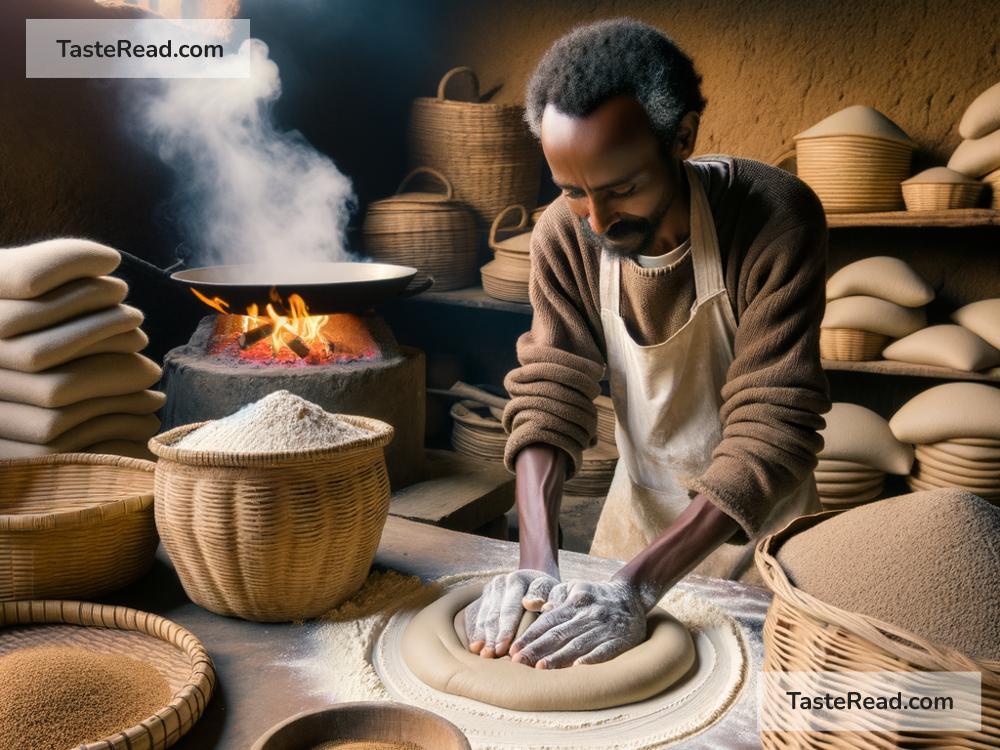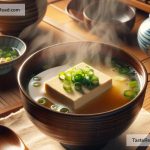Embarking on a Culinary Journey: Unveiling the Unique Bread-Making Techniques of Ethiopia
When we think about bread, the usual suspects often come to mind: the crusty French baguette, the dense and dark German rye, or perhaps the soft and fluffy white loaf that is ubiquitous in many Western households. However, the world of bread extends far beyond these familiar faces. Ethiopia, a country with a rich cultural tapestry and an equally vibrant culinary tradition, offers a fascinating bread-making tradition that deserves a closer look. Join me on a culinary journey as we discover the unique bread-making techniques of Ethiopia.
The Heart of Ethiopian Bread: Injera
At the heart of Ethiopian bread-making, and indeed Ethiopian cuisine, sits a unique and remarkable bread known as injera. Unlike the breads most of us are used to, injera is a large, spongy, crepe-like flatbread, made with a grain called teff. Teff is tiny—about the size of a poppy seed—and ranges in color from white to dark brown. It’s not just the cornerstone of injera; it’s also a nutritional powerhouse, packed with protein, calcium, and iron.
The Injera Making Process: A Labor of Love
Making injera is a labor of love and patience, embodying techniques passed down through generations. The process begins with the teff flour being mixed with water to form a batter. This batter is then left to ferment, a crucial step that gives injera its distinct tangy flavor. The fermentation period varies, often ranging from a couple of days to up to a week, depending on the desired sourness and the ambient conditions.
Once the fermentation process is deemed perfect, the batter is ready for cooking. This is done on a large, flat, circular griddle known as a mitad, which traditionally was made out of clay but nowadays is often metallic and electric. The batter is poured onto the hot surface in a circular motion, starting from the outside and working its way to the center. The heat is then evenly distributed, ensuring the injera cooks through without flipping.
Beyond Injera: The Diversity of Ethiopian Breads
While injera might be the star of the show, the Ethiopian bread family has more members, each with its unique characteristics and occasions.
-
Dabo: This is a sweetened wheat bread, often flavored with spices such as cardamom and fenugreek, creating a marvelous aroma and a distinct taste. Dabo is typically prepared for special occasions and religious holidays. Its preparation involves kneading the dough, allowing it to rise, and then baking it, often in a traditional oven or stove.
-
Ambasha: Another wheat bread, Ambasha is denser than Dabo and is marked with a unique pattern on the surface, made by cutting into the dough before baking. It’s often seasoned with nigella seeds, giving it a signature taste. Ambasha is commonly served during festivities and gatherings, often accompanied by stews.
-
Himbasha: Similar to Ambasha but with a slighter different flavor profile due to the addition of raisins and sometimes a hint of cardamom. It’s typically more dense and chewy.
The Cultural Significance
In Ethiopia, bread is more than just food; it’s a cultural symbol. Injera, for instance, is not just eaten; it serves as a plate on which other foods are laid out, and its sponge-like texture is perfect for soaking up sauces and stews. Sharing a meal from a single piece of injera is a communal experience, reflecting the Ethiopian ethos of unity and togetherness.
A Culinary Art Worth Preserving
The unique bread-making techniques of Ethiopia are a testament to the country’s rich heritage and culinary diversity. As global interest in traditional and artisanal foods grows, these practices offer a window into a world where food is deeply intertwined with culture and tradition. They remind us of the importance of preserving these culinary arts, not only for their intrinsic value but also for the role they play in connecting us to our collective human heritage.
Conclusion
Exploring the unique bread-making techniques of Ethiopia offers us a glimpse into a fascinating part of the world’s culinary diversity. From the tangy and spongy injera to the festive dabo and ambasha, these breads tell a story of tradition, community, and the enduring power of food to bring people together. So, next time you enjoy a bite of bread, remember that somewhere, halfway across the world, there’s a rich and vibrant culture where bread is not just food—it’s a way of life.


